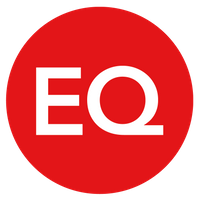Benefits personalisation: The key to staff retention?

It’s telling that 71 per cent of CEOs say human capital is a key source of competitive advantage, according findings from IBM’s Redefining Competition (2017) study. Yet HR often struggles to secure technology and benefits investments. In fact, ‘justification of additional spend’ is currently the main barrier to an enhanced benefits and rewards offering: just under two thirds (59 per cent) of HR respondents replied to this effect in research by Employee Benefits and Equiniti.
So considering budget is hard to come by, how on earth do you retain staff and limit business cost and disruption? Put simply, make more of what you’ve already got. Ensure much more meaningful communication of benefits, so that they are used and valued. Also integrate your benefits strategy with everything else that effects health and happiness throughout an employee’s working life. In short, focus on Employee Experience (EX).
The importance of EX
Employee loyalty relies on employers building strong relationships and trust. This can only really be achieved by getting to know employees as individuals, so that you deliver an experience that meets their needs.
Ensuring your people enjoy a good experience throughout their working life is crucial to building trust, reputation and, as a result, retention.
The personalisation of employee benefits can’t drive staff retention in isolation, but as a core part of a wider EX strategy it can be extremely beneficial.
Good EX delivery
EX is the sum of everything your employees experience: pre-employment; during recruitment; onboarding; reward and recognition; learning and development; and eventual retirement.
It starts with a compelling brand linked to a strong Employer Value Proposition (EVP), with managers empowered to make a difference to the everyday lives of employees. The combination of these aspects helps establish a framework for the way in which your business wants to be seen, its strategy and goals, as well as providing reference points for an employee to ensure their experience matches the company’s values.
Employee trust is built upon employers listening to what their people need and want. So it’s important for you to first establish a process for listening and, importantly, following up on feedback received.
This may be achieved via a combination of informal conversations and hard science. The typical communications medium of an annual employee satisfaction survey won’t cut it though, particularly if the results aren’t translated into actions.
Instead, understanding an individual’s life-stage and their ambitions is paramount. The findings of such needs-based assessment should then be reflected in your Total Reward package.
For example, an employee’s benefits package may need to reflect a company’s commitment to employee wellbeing. Even more traditional employee benefits can be tailored to reflect an employee’s key priorities – such as higher than required employer pension contributions; performance-related pay schemes could be paid twice a year, rather than just annually – so payments are made in June and December: times when personal finances can be stretched.
How to personalise benefits
This is where the range of geodemographic tools now available in the market come into play.
This technology is traditionally used in a marketing environment to breakdown consumer data into segments based on millions of consumer data points over hundreds of demographics. Behaviour, lifestyle and geographical dimensions are collected from third party survey data, open data and using consumer marketing databases.
From this information, marketeers derive important insights to help deliver more meaningful messages.
Such tools also allow for profiling of discrete populations and here’s where the employee aspect fits in. You can upload a sample of your employee database for the purposes of analysis. It will then map your employees, according to the segments, to help you understand your people more holistically.
All of this can be incorporated into a Total Reward platform that uses triggers and multi-channel communications to automatically target different cohorts in line with life stages.
In this way, you can ensure that messages are personalised: they’re relevant to individuals and therefore much more likely to be taken on board. And, hence, benefits are much more likely to be used.
Although this may not represent the key to staff retention, as part of an EX strategy, it will go a long way towards helping ensure your company builds and maintains a positive reputation: a place where people want to be.
The author is Andrew Woolnough, director of HR Solutions at Equiniti.
This article was provided by Equiniti.
Supplied by REBA Associate Member, Equiniti
Hi we are EQ; some may know us as Equiniti! We provide specialist reward, benefits and payroll solutions.







